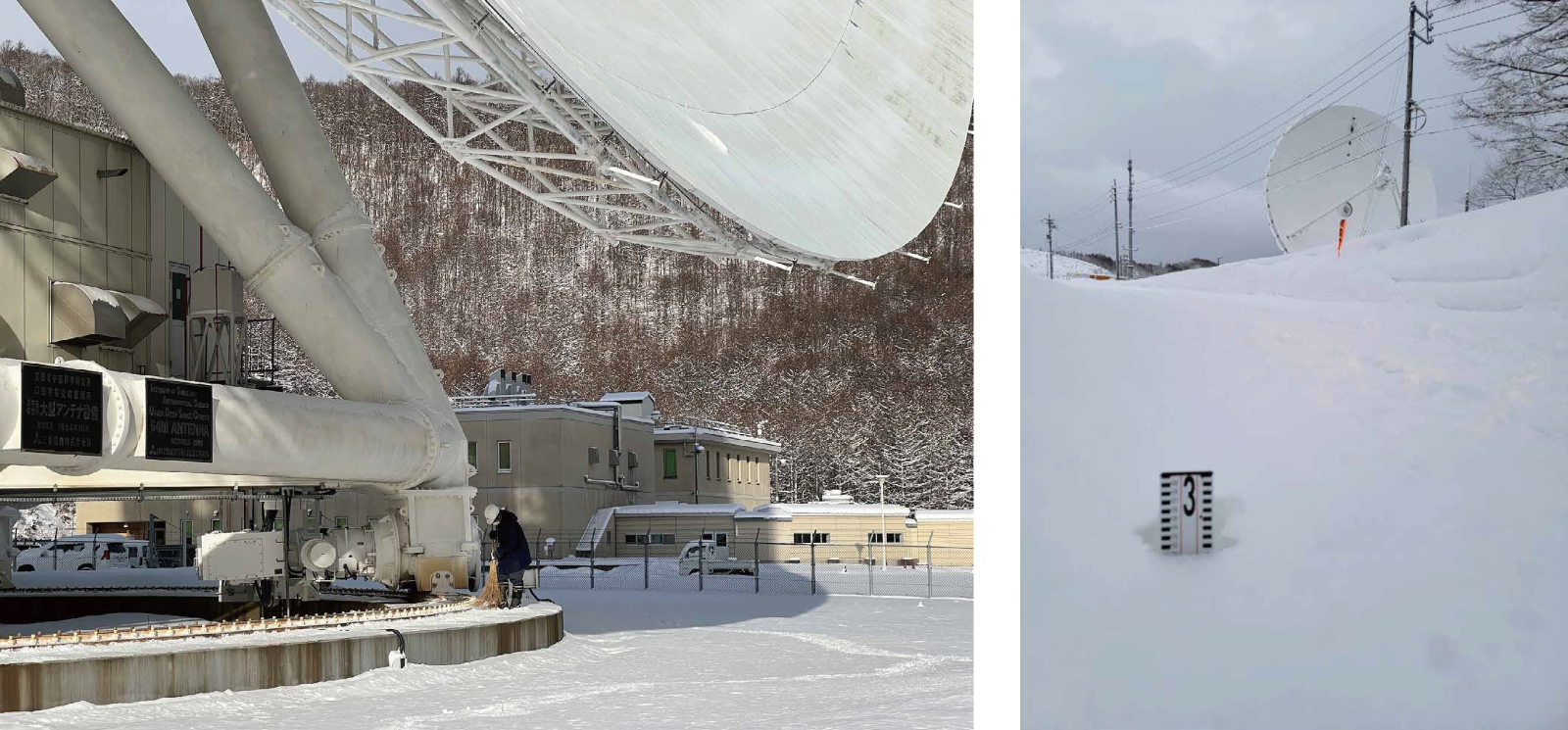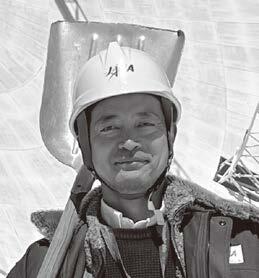Space Tracking and Communications Center
Communicating with Space, Unbeaten by Snow
Winter Activities at the Usuda Deep Space Center
The Usuda Deep Space Center ("the Center") sends commands to deep space probes orbiting for planet observations and other purposes and also exchanges observation data with the probes. As the major equipment of the Center, two super-giant parabola antennas are in use: an antenna with a diameter of 64 m (at the Usuda Deep Space Station: UDSS) and that with a diameter of 54 m (at the Misasa Deep Space Station: MDSS).
The Center is located at an altitude of 1500 m in Saku City, Nagano Prefecture. In winter, the Center is placed in an extremely harsh environment. How is it operated in such an environment? TAKEFUJI Kazuhiro engages in the management of the Center. He says, "We keep the primary mirror of each antenna in an almost vertical position to prevent snow from piling up on the giant mirror. At the UDSS, before operating the antenna, we carefully remove the snow piled on the slide rail by using a bamboo broom and the like because piled snow could cause the giant antenna to slide sideways. But at the MDSS, the rail is fully covered to prevent snow from piling on it." In the area surrounding the Center, the daily snowfall amount reaches 20 cm in average, and it once reached nearly 1 m. "You need to drive about 10 km on a mountain road to reach the Center, and it is necessary to scatter snow melting agent on the road. Also, we sometimes rescue cars stuck in snow."

Presently, at the UDSS, the antenna is mainly used for communication with the Venus Climate Orbiter "AKATSUKI" and the Asteroid Explorer "Hayabusa2." The antenna of the MDSS is operated to communicate with "Hayabusa2" and the Japanese Mercury Magnetospheric Orbiter "MIO" and the European Mercury Planetary Orbiter (MPO) used for the "BepiColombo" international mercury exploration project as well as for Juno, NASA's space probe orbiting the planet Jupiter.
The UDSS has been operated since 1984. Going forward, the MDSS (completed in 2021) will play a major role for the Center to keep reliable communication with such probes. However, the UDSS will also continue to be used according to TAKEFUJI. "At the UDSS, we plan to communicate with the Smart Lander for Investigating Moon (SLIM) to be launched within a few years and are preparing for the ground system. Also, for the detection of much smaller and more distant space debris, we are considering conducting an experiment to synthesize the UDSS and MDSS antennas to make them function as one antenna with a diameter of 80 m to 90 m."
The Center is closed to the public in winter and is reopened to accept visitors in the middle of April. Why don't you visit the Center to see the giant parabola antennas and think about space?
Profile

|
|
|---|
All the images are copyrighted ©JAXA unless otherwise noticed.
- Home>
- Global Activity>
- Public Relations>
- JAXA’s>
- JAXA's No.87>
- Winter Activities at the Usuda Deep Space Center